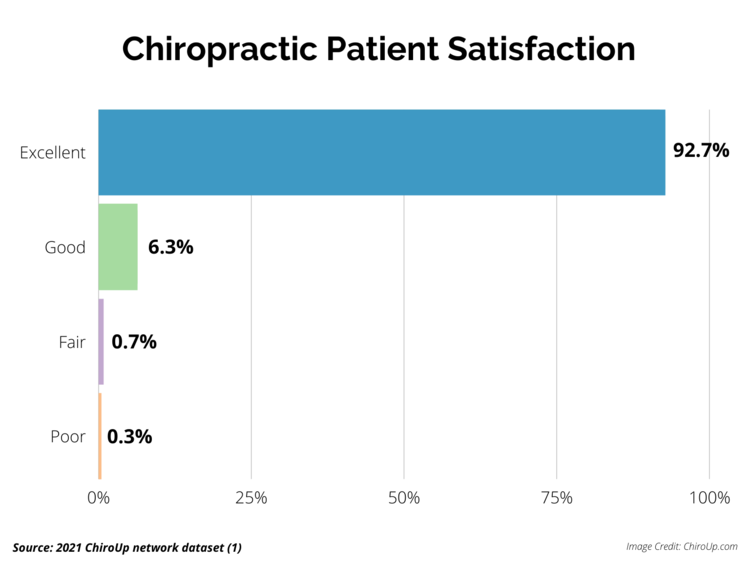Symptomatic Reactions, Clinical Outcomes and Patient Satisfaction Associated with
Upper Cervical Chiropractic Care: A Prospective, Multicenter, Cohort Study
SOURCE: BMC Musculoskelet Disord. 2011 (Oct 5); 12: 219
Kirk Eriksen, Roderic P Rochester, and Eric L Hurwitz
Chiropractic Health Institute, PC
2500 Flowers Chapel Road
Dothan, AL 36305, USA.
BACKGROUND: Observational studies have previously shown that adverse events following manipulation to the neck and/or back are relatively common, although these reactions tend to be mild in intensity and self-limiting. However, no prospective study has examined the incidence of adverse reactions following spinal adjustments using upper cervical techniques, and the impact of this care on clinical outcomes.
METHODS: Consecutive new patients from the offices of 83 chiropractors were recruited for this practice-based study. Clinical outcome measures included:
1) Neck pain disability index (100-point scale),
2) Oswestry back pain index (100-point scale),
3) 11-point numerical rating scale (NRS) for neck, headache, midback, and low back pain,
4) treatment satisfaction, and
5) Symptomatic Reactions (SR).
Data were collected at baseline, and after approximately 2 weeks of care. A patient reaching sub-clinical status for pain and disability was defined as a follow-up score <3 NRS and <10%, respectively. A SR is defined as a new complaint not present at baseline or a worsening of the presenting complaint by >30% based on an 11-point numeric rating scale occurring <24 hours after any upper cervical procedure.
RESULTS: A total of 1,090 patients completed the study having 4,920 (4.5 per patient) office visits requiring 2,653 (2.4 per patient) upper cervical adjustments over 17 days. Three hundred thirty- eight (31.0%) patients had symptomatic reactions (SRs) meeting the accepted definition. Intense SR (NRS ≥8) occurred in 56 patients (5.1%). Outcome assessments were significantly improved for neck pain and disability, headache, mid-back pain, as well as lower back pain and disability (p <0.001) following care with a high level (mean = 9.1/10) of patient satisfaction. The 83 chiropractors administered >5 million career upper cervical adjustments without a reported incidence of serious adverse event.
There are more articles like this @ our:
Headache and Chiropractic Page and the:
CONCLUSIONS: Upper cervical chiropractic care may have a fairly common occurrence of mild intensity SRs short in duration (<24 hours), and rarely severe in intensity; however, outcome assessments were significantly improved with less than 3 weeks of care with a high level of patient satisfaction. Although our findings need to be confirmed in subsequent randomized studies for definitive risk-benefit assessment, the preliminary data shows that the benefits of upper cervical chiropractic care may outweigh the potential risks.
KEYWORDS: Chiropractic, Adverse Effects, Symptomatic Reactions, Manipulation, Upper Cervical
From the FULL TEXT Article:
Background
Previous observational studies have shown that adverse events (AE) following spinal manipulative therapy (SMT) applied to the neck and/or back (i.e., local discomfort in treatment area, radiating symptoms, headache) are relatively common, although these reactions tend to be mild in intensity and self-limiting. [1-6] Clinical trials have also found minor AEs after patients undergoing a trial of SMT. [7-12] Some studies have looked at cervical SMT and the relationship of this care to AEs and clinical outcome measures. One investigation concluded that subjects with AEs were less satisfied with care, perceived less improvement in their neck symptoms, and had more pain and disability at all follow-up assessments. [10] Attempts have been made to find predictors for side effects from SMT. [13] Women are more likely to report AEs compared to men, and patients with long lasting problems are more likely to report reactions as well. [3, 13] One study found that the use of cervical rotation with SMT, and a patient’s work status were moderately associated with an increased incidence of AEs. [14]
Adverse events have also been studied for pediatric patients receiving SMT and have found to be rare. [15, 16] Miller and Benfield [16] studied 679 children under the age of three receiving SMT with 85% of parents reporting an improvement. Seven parents reported an AE with a reaction rate of approximately 1 child in 100, or one reaction reported for every 749 treatments. There were no serious complications resulting from chiropractic treatment in their study, although one systematic review of pediatric patients aged 18 or younger found 9 cases of serious AEs in the literature. [15] Adverse reactions have been found to occur more frequently following cervical SMT compared to cervical mobilization, yet various studies have failed to show a significant clinical benefit for either form of treatment. [8, 10, 11, 17] Subjects reporting AEs have reported less satisfaction with care, and were less likely to experience clinically meaningful improvements in pain and disability. [10]
Read the rest of this Full Text article now!





Leave A Comment